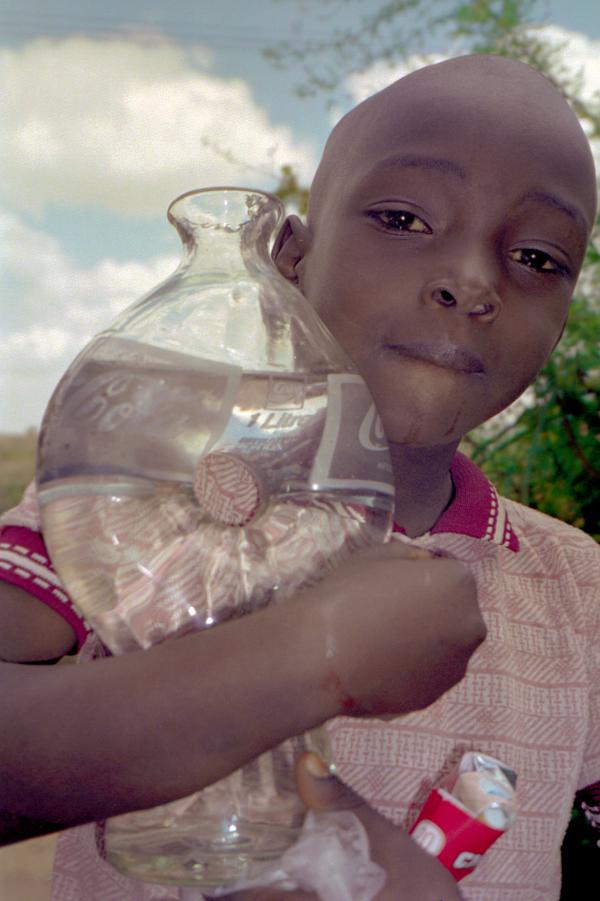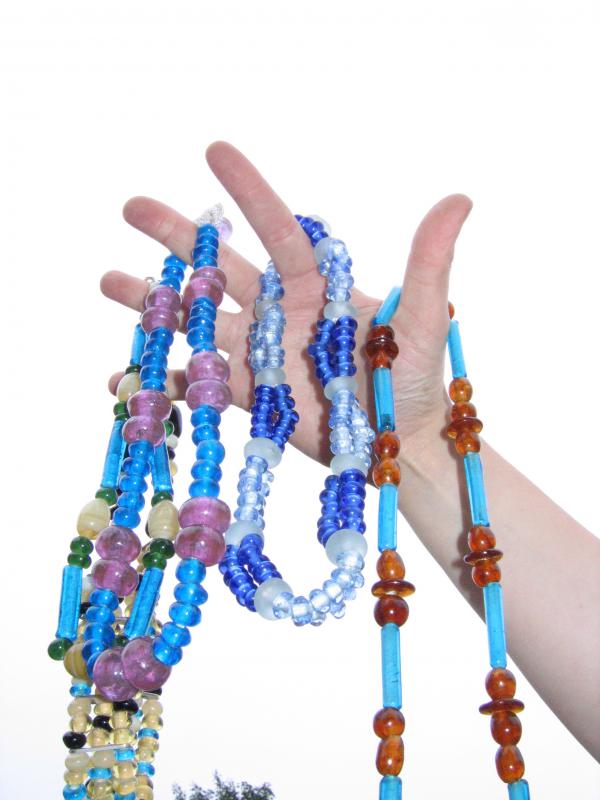Lens Lamp (header image)
"Someone showed me a container full of old spectacles and sunglasses from the West at an eye hospital in Nairobi. They couldn’t do anything with them because the strength of the glasses varies per person. I collected the lenses and provided them with copper rims so that they could be soldered together into an immense Lens Lamp, a kind of African Tiffany, which ended up hanging in Groningen City Hall. From the frames I made belt buckles."
Arnout Visser
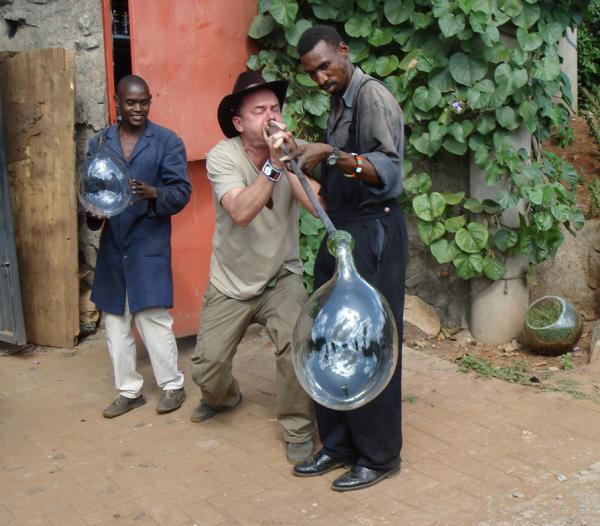
Kenya
"I made my first trip to Kenya in 2000. If you spend a while in Africa, then you notice that much of the development aid of recent decades has had a negative rather than a positive effect. In Kenya I regularly saw aid supplies, such as mountains of second-hand clothing. These were donated by the West, but left the local tailors and dressmakers without work. I was really interested in seeing what you can mean there as a designer, by having designs realized there and developing tools: trade not aid. I think up a design and seek out the materi- als and the labour force to go and make it.
Since then I’ve returned to Kenya often, to Kitengela, where there are glass workshops and glass furnaces. It’s wonderfully inspiring to see how everything is recycled there, because it’s expensive to bring in new raw materials while labour is cheap. They don’t even throw away a crown cap and the glass of broken windows and bottles
is melted down so that new products can be made from it. Something else I consider to be special is that everything at Kitengela is round: the design, the architecture... there isn’t a single right-angled corner to be found. That’s because of the hippie influences from Europe and because everything is made by hand, even in the field of glass: they don’t use any moulds there. The recycled glass is tough and tricky to work with, so things often turn out lopsided. I didn’t try to turn out rigid shapes, but treated this as a strength: I try to produce designs in which the crookedness means that prod- ucts are vivacious, come alive: the bubbles and impurities lend depth to the glass. They form a decoration of sorts and it gives the feeling that the glass is marked by age.
The glassblowing studio where I have my designs executed, Kitengela Hot Glass, is owned by Anselm Croze, a German who became a naturalized Kenyan. He once followed an apprenticeship with the renowned Heesen family of glassblowers from Leerdam and that is still evident in his formal idiom. In the old days you had to follow a river channel in a sturdy four-wheel drive vehicle to get to Kitengela; now there’s an asphalt road, but this has also made it more dangerous: Anselm’s family was violently attacked by criminals. As there is no connection to the electricity network, they use a special glass furnace. This was developed by a Finnish glass artist, imitating a centuries-old design. The fire is used to pressurize water, then the resulting steam is used to inject fuel into the furnace. This fuel consists of waste engine oil, which is collected from garages. Everything is self-regulating and runs on the pressure of the steam."
From Arnout Visser en de Glaspiraten

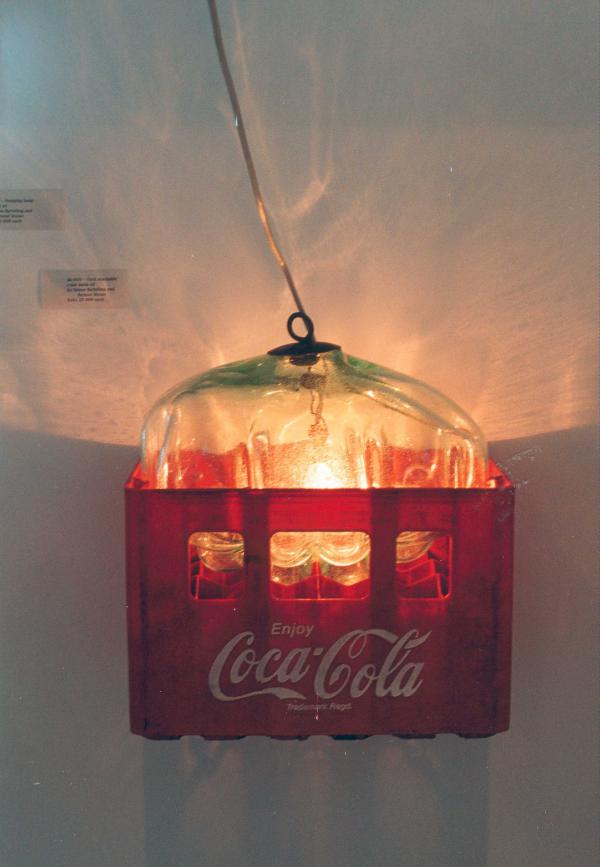
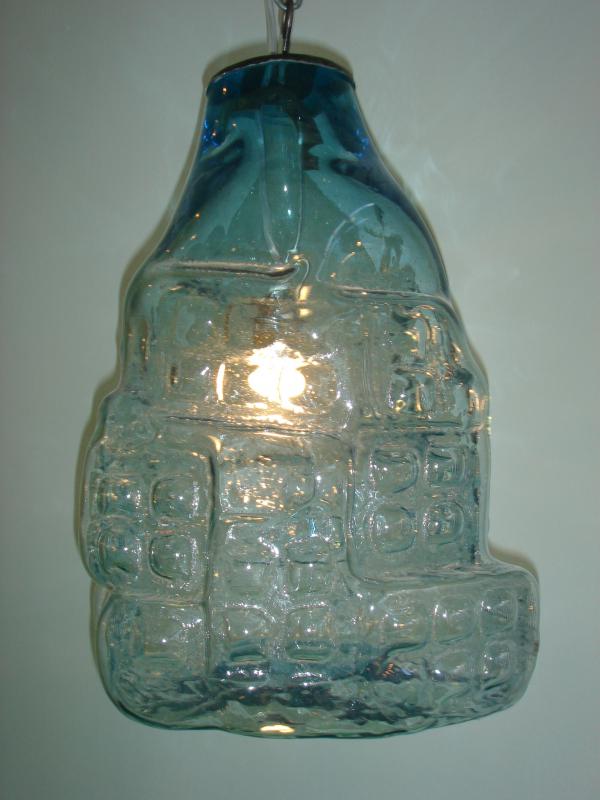
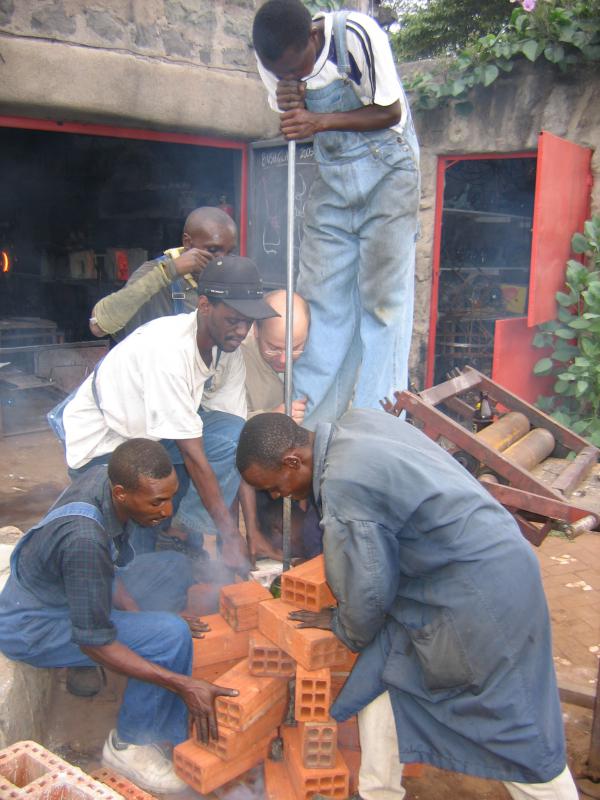
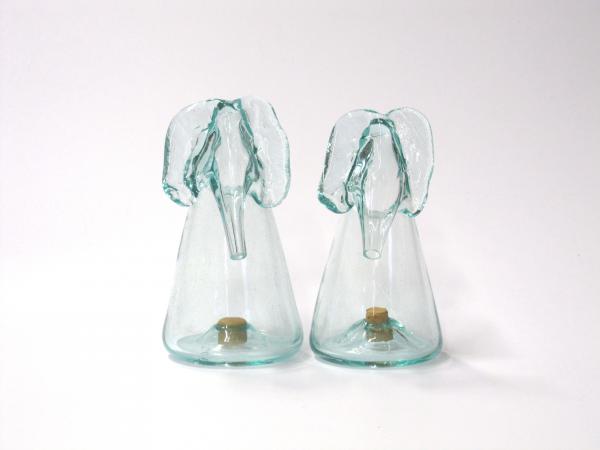
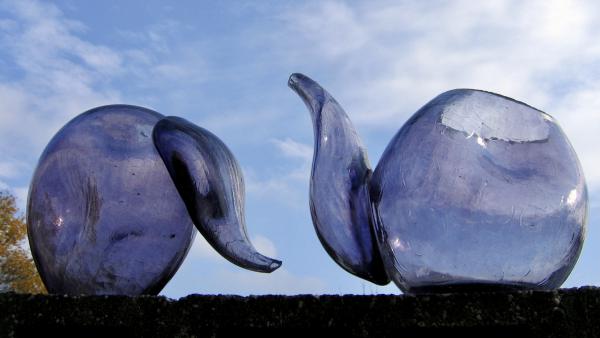
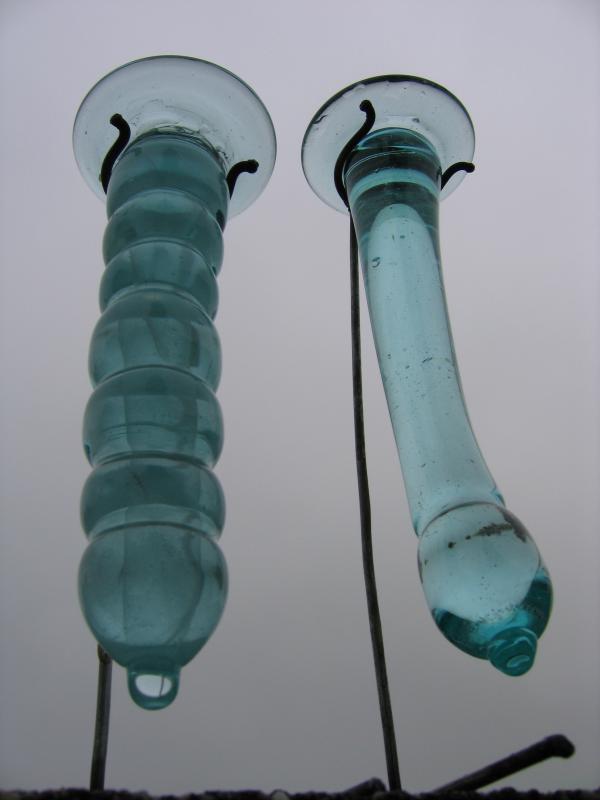
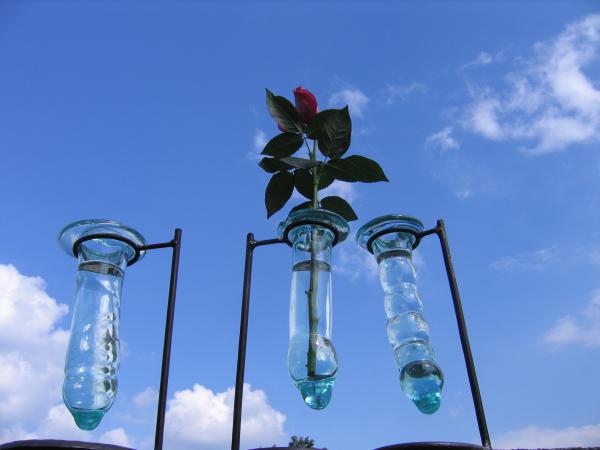
Condoms
"Arnout uses the somewhat negative term ‘bush glass’ (glass of inferior quality) as a sobriquet. It is often made from recycled window glass. In addition, tourists on safari leave behind many soda and beer bottles as well as signal-blue spirits bottles. This bottle glass is purer than window glass and can therefore be transformed into lamps and vases more easily. Former prostitutes converted fragments of brown beer glasses and blue glass into bead necklaces.
In Kenya, as in other African countries, AIDS has claimed many victims. With his condom vases Arnout hopes to smash the social taboos about AIDS and the use of contraceptives. He also designed a lamp that resembles a giant condom, to which real condoms were affixed. During an exhibition in Nairobi these were plucked off by the visitors, exactly as intended. But more importantly everyone was talking about it with a chuckle: in the studio, in the pub and at home. It wasn’t about the design object but what he actually did with it, precisely as Victor Papanek, the pioneer of humanitarian design, had intended it over 40 years earlier.”
Chris Reinewald, Arnout Visser en de Glaspiraten

